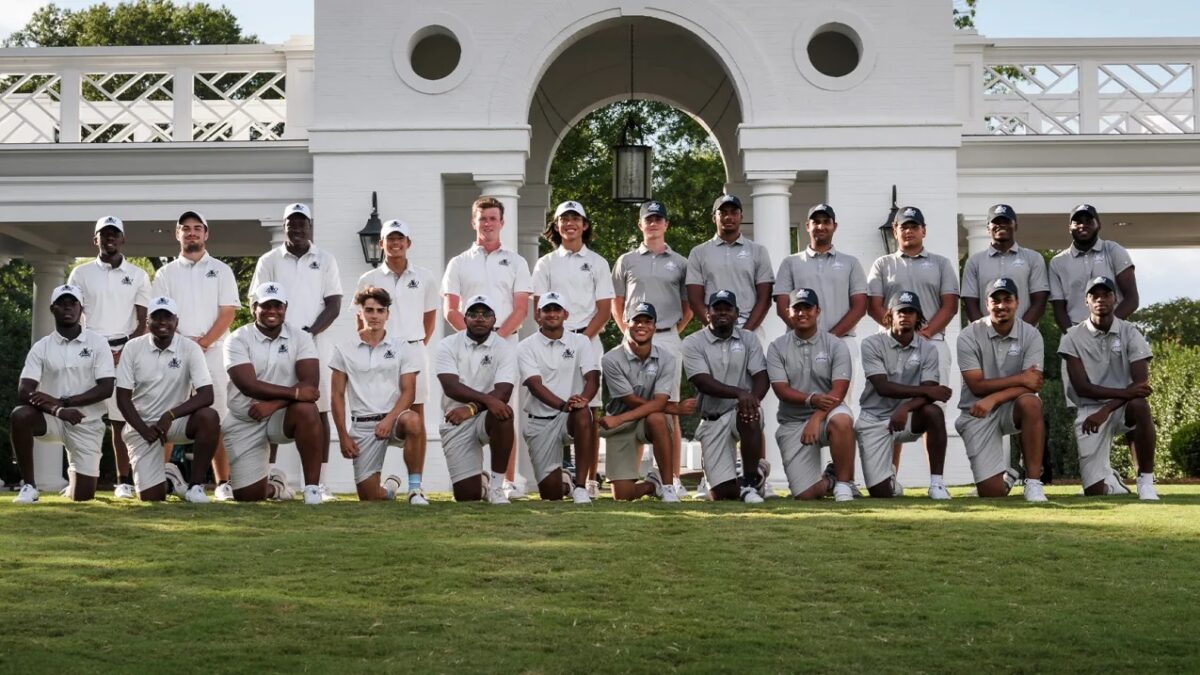“Did I know it was going to happen in year two? No I didn’t, but I knew it was possible.”
Greg Odom Jr. thought head coach Sam Puryear was blowing more smoke than a chimney when he was being recruited to play golf at Howard University.
“Getting recruited, I thought he was bluffing. I’m on the phone with him, he’s like, ‘Oh, you’re gonna win championships, you’re gonna get this, you’re gonna do this,’” recalled Odom Jr., who was a sophomore at Memphis at the time. “When you actually walk up on the tee of PGA Tour event and you walk to the podium after winning a championship, you look back and it’s just, ‘Wow, everything happened.’”
Sure, they were lofty goals for an upstart program getting its first crack at NCAA Div. I competition thanks to the financial backing of NBA superstar and avid golfer, Stephen Curry, but where there’s smoke, there’s fire. And Puryear believed every single word.
“I’ve been feeling like for the last 30 years I’ve been saying to myself the day is coming where you can put (an HBCU) product on a golf course where it can be competitive if you have the proper things in place,” Puryear said of his vision for the program. “From funding to course access to instruction to the opportunity to compete against the better programs, teams can get better. I knew that was gonna happen.”
“Did I know it was going to happen in year two? No I didn’t, but I knew it was possible.”
Howard’s inaugural 2021-22 season was just five events, two of which were match play duels against local programs Navy and Georgetown. Howard finished T-13 at the Golden Horseshoe Intercollegiate, third (out of four) at the MEAC Championship and fourth at the PGA Works Collegiate Championship, an event that highlights the best minority collegiate golfers across the country.
“I feel like we’ve always had the pieces, we just had to put them together,” said Odom Jr, who individually placed fifth at the conference championship and then won the PGA Works in 2021. “We were close the first year at PGA Works but we fell short, and I feel like that was our drive for the next season.”
The Bison closed out their second season in 2021-22 with a pair of wins at the MEAC Championship and PGA Works and placed inside the top five in five of 10 events. Odom Jr. won the individual MEAC Championship wire-to-wire and then defended his PGA Works title, fulfilling Puryear’s vision.
“We go to every event and try to win and give it our all, so I feel like the expectations haven’t changed,” said Odom Jr of the team’s early success. “If we win, we win, and if we don’t, we learn something so we can win next time.”
“I think the one thing that we have to continue to do is just to realize that we have a long way to go,” added Puryear. “All the guys on my team will tell you, I preach it all the time: don’t get comfortable, because you’re only as good as your last week, as good as your last shot.”
“So we keep it focused, stay in the present, don’t put your mind too far down the road and you don’t lament on where you’ve come from, because you have to keep putting the left foot in front of the right foot.”
The team has worked hard to reach its current status as the top HBCU program in the country, but Puryear and his players will be the first to tell you that none of this would be possible without Curry, who in 2019 announced his commitment to support and establish Howard’s first NCAA Div. I golf program for the next six years. The university also launched a golf endowment campaign to support Curry’s efforts. While Curry’s money has provided the team with tangible benefits, it’s the intangibles his support brings that mean the most.
“To show you the mark of a man, when (Curry) was hurt during the NBA season last year, he was in a walking boot, got in a cart and followed the team when we were playing out at Stanford,” said Puryear. “Most people, 99% of the people would never do that. Some people are comfortable with signing a check. He’s comfortable touching a life. To me, that speaks volumes.”
“I would like to commend that guy. He’s an NBA champion. He’s a superstar. He’s the MVP. He’s everything. But he’s also the guy that started the Howard golf team and helped fund the team. It’s incredible,” added Odom Jr. “For the team, he’s present, and when we need him, he comes. He’s supplied us with everything, and he’s helped us with resources and opened doors for opportunities so we just can’t thank him enough. He’s the guy.”
The men’s golf program joined the Northeast Conference as an associate member this season and have six events on the schedule for this fall, including this week’s Howard/USF Intercollegiate at TPC Potomac at Avenel Farm. As the program continues to evolve, the expectations for Odom Jr. and his team remain the same.
“I see no difference. I still see us being the No. 1 seed and having that target on our back,” said Odom Jr, who won the Bison’s first start of the fall at the River Run Collegiate. “We will be at that podium and we will be winning.”
[listicle id=778073458]
[mm-video type=playlist id=01es6rjnsp3c84zkm6 player_id=01evcfxp4q8949fs1e image=https://golfweek.usatoday.com/wp-content/plugins/mm-video/images/playlist-icon.png]

